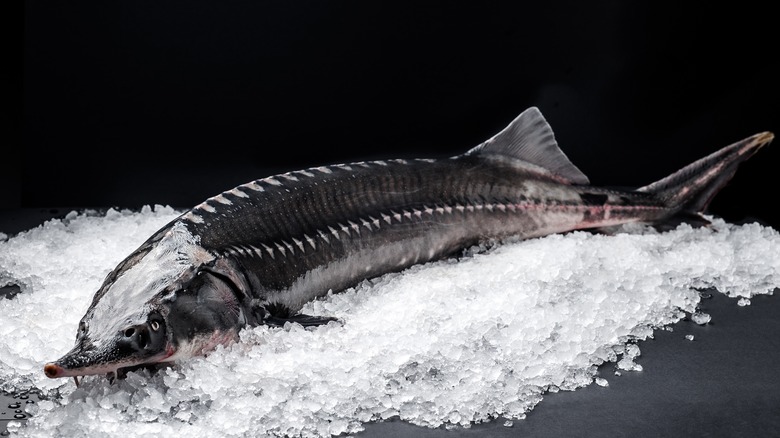You'll Probably Never Guess What Albany Beef Actually Is
You've heard of free-range, organic, and grass-fed beef. You may have also heard of Prime, Choice, and Select beef (via the U.S. Department of Agriculture). But have you ever heard of Albany beef? Unless you've lived in New York State's Hudson River Valley in the 1800s, the answer is most likely no. According to CulinaryLore, "Albany beef" did not refer to a land animal but a river creature. From the late 1700s through the mid-1800s, this tongue-in-cheek term was the nickname for a giant prehistoric sturgeon fish that were so plentiful in the Hudson River at the time that they appeared on dinner plates as often — or perhaps more so — than beef.
Sturgeons date back to the Middle Jurassic period that ended 174 million years ago, according to Britannica. They can grow to be more than 20 feet long and can live up to 60 years, notes CulinaryLore.
Today, the sturgeon is best known for its top-grade caviar. Unfortunately, their populations are dwindling. Most species of sturgeon are critically endangered thanks to humanity's growing appetite for the fish's high-quality fish roe (via World Wildlife Fund). But in 1800s New York, Albany beef was widely consumed across the region.
Albany beef: 'A staple foodstuff'
In 1800s New York, particularly along the banks of the mighty Hudson River, sturgeon was a common meal, especially for those that could not afford to regularly purchase more expensive protein options such as poultry or (real) beef. It was " ... a staple foodstuff for the denizens of most Albany boarding houses," according to a 1927 The New York Times article, " ... the main article in many a farmhouse and laborer's cottage along the river." Sturgeon were so plentiful in the Hudson at the time that their caviar — the most prized of which now fetches up to $172 per teaspoon, according to Chef's Pencil — was often given away for free in saloons, where their salty flavor spurred thirst and encouraged drinking (via The Spruce Eats).
But as The New York Times article reports, the Hudson sturgeon population was in grave danger by the early 1920s due to overfishing in large part owing to the increasing popularity of sturgeon caviar. "It may be that the sturgeon will come back, but this is not the belief of the men who set their nets nowadays," the paper wrote. "They have seen their annual catch grow smaller and smaller each year and they think the end is close at hand for 'Albany beef.'"

